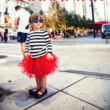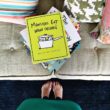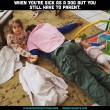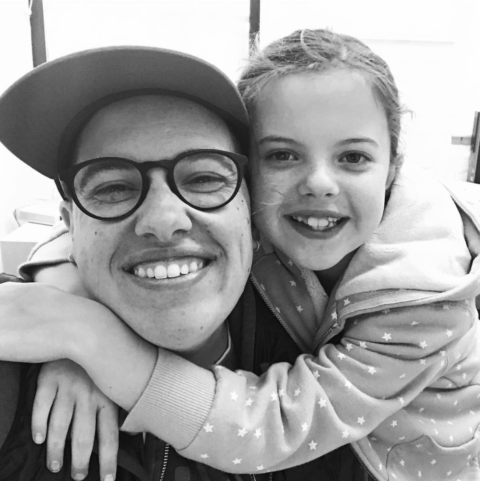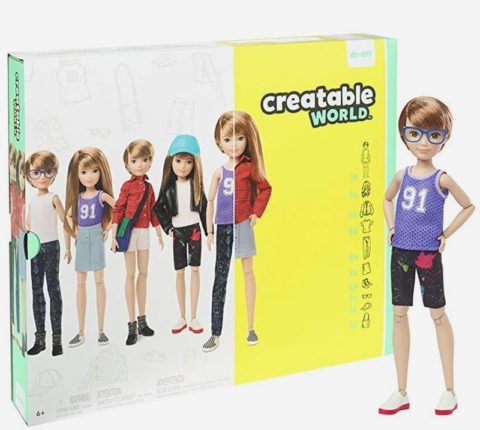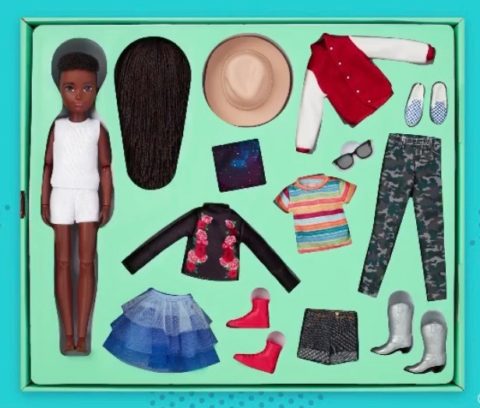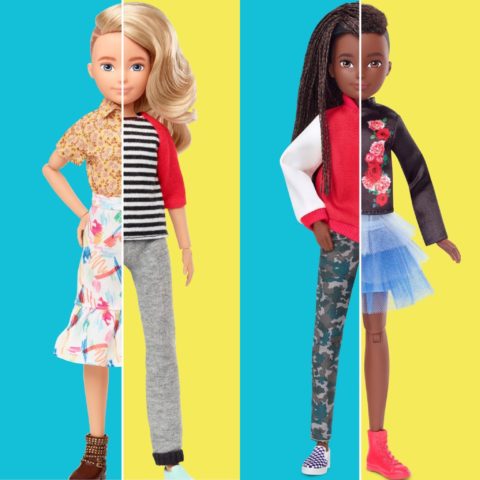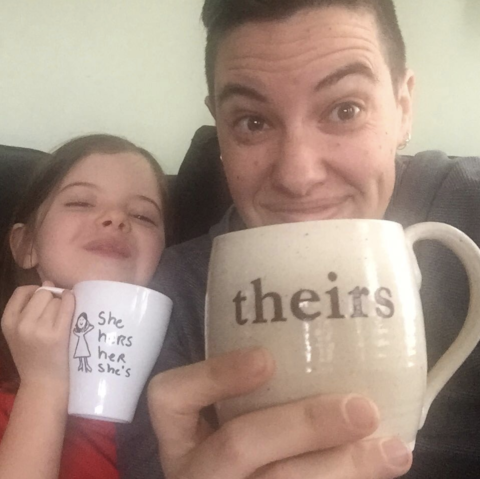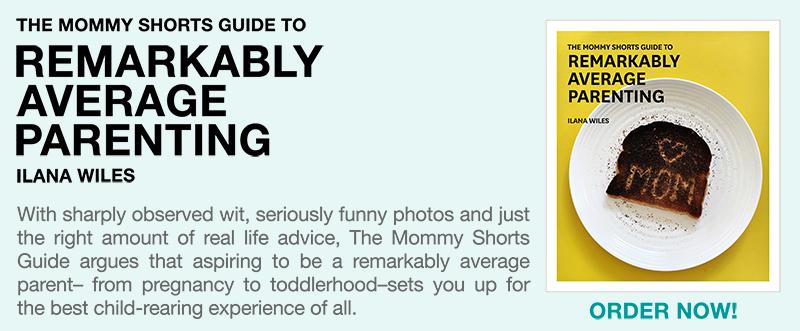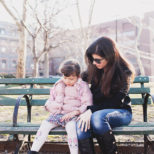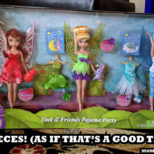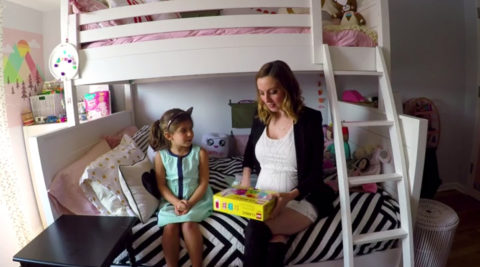This post was written by Casey Brown, a trans parent who writes the blog Life with Roozle.
When I came out to my own kid as nonbinary (identifying as neither a boy or a girl), we didn’t have a super fun doll to help us start the conversation, so we had to get creative. We started with a poster sized piece of paper, some markers, and a smaller stack of paper folded in half and stapled on the side. On the poster we drew three columns and labeled them boy, neutral, and girl. “Teacher!” I’d shout out and my kid would shout back, “neutral!” We’re pretty enthusiastic around here. We filled the paper with prince, royalty, and princess. With dad, parent, and mom. With brother, sibling, and sister. Neutral language isn’t just for nonbinary people, it’s language we all use every day.
Then we picked up the blank book made of paper and staples and wrote our own story of a nonbinary kid who uses they/them pronouns. We used a lot of the neutral language from our poster to help fill it up. Playing is fun. Playing is how we learn. Playing is how we practice.
Yesterday, Mattel introduced Creatable World, which is a doll a lot like Barbie, Mattel’s long-standing popular doll brand, but with a twist. The Creatable World doll starts as gender neutral and comes with a set of accessorizes to allow the child to play with it however they like. It doesn’t have a curvy figure like Barbie or the shoulders and chest of a Ken doll, but instead, it is designed to look a lot like a 7 year-old kid.
With Creatable World, children can create a character who aligns perfectly with their own gender or a character who maybe pushes the boundaries a bit. The idea is that the child has access to everything they need to create their own narrative without the body of the doll doing it for them. Long hair and pants? Okay! Short hair and a skirt? Sure!
It’s not just about having a doll that represents a trans child, it also gives trans parents a tool to teach their kids about their own identity and it gives all kids an opportunity to learn about self-expression and inclusivity of others.
Gender Isn’t Just For The Trans Kids
Everyone has a gender assigned at birth. And most of us don’t line up perfectly with the expectations that came with that assignment. Boys can have long hair and play with dolls. Girls can climb trees and play sports. Even the idea of true cultural standards of gender seems to be losing its grip. Of course a boy can have long hair. Of course a girl can play sports. And although we’re getting further from such hard and fast rules, there are still some gender standards. Clothes, hairstyles, accessories, and even body language all tend to fall into the ever roomier standards of gender. The goal isn’t to destroy this altogether; the goal is to include room for everyone.
My kid was assigned female at birth and with the short exception of when she identified as a Disney Princess, she identifies fully as a girl. I have always let her define that however she wants, but even so, she’s all in for Girl. And that is EXCELLENT. I celebrate her identity just the same as she celebrates mine.
Challenging Gender Norms Isn’t New, Being Inclusive of Gender Nonconforming People Is
The toys and products marketed to our kids are just catching up with the social conversation, maybe a bit late to be honest. We’ve been here for a while. It was a group of trans people who started the Stonewall Riot, which has taken many twists and turns to become the Pride Parade. That was 50 years ago. Trans kids aren’t new. Gender nonconformity isn’t new. A line of dolls isn’t going make a kid trans. That’s not how this works. But the kid who is trans now gets to have dolls that look like them. And the kids who aren’t trans or even gender nonconforming get a little extra room. That’s good for all of our kids. That’s good for all of us.
Trans kids have higher rates of suicide, depression, and self harm than any other group. But! Trans kids with supportive families have the exact same rates as their gender conforming peers.
By teaching our little kids about gender through play, by allowing them to ask questions and push social boundaries, we give our kids the space to choose who they want to be and to learn how to be more inclusive of those who are different than them. That’s not a scary thing. That’s not a bad thing. That’s the whole point of everything we’re doing as parents, with or without the toys that help us get there.
——————————
Casey Brown is a nonbinary transgender parent living in Boston with their partner and 10 year-old daughter. Casey writes at LifewithRoozle.com and can be found on Instagram as @lifewithThisOne.





